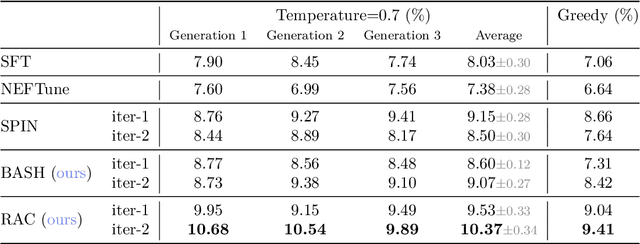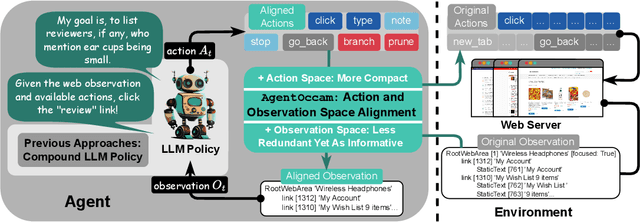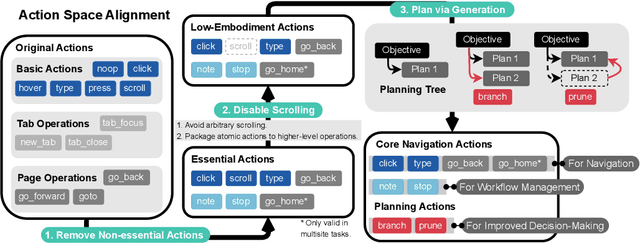Huzefa Rangwala
Hierarchical Lexical Graph for Enhanced Multi-Hop Retrieval
Jun 09, 2025Abstract:Retrieval-Augmented Generation (RAG) grounds large language models in external evidence, yet it still falters when answers must be pieced together across semantically distant documents. We close this gap with the Hierarchical Lexical Graph (HLG), a three-tier index that (i) traces every atomic proposition to its source, (ii) clusters propositions into latent topics, and (iii) links entities and relations to expose cross-document paths. On top of HLG we build two complementary, plug-and-play retrievers: StatementGraphRAG, which performs fine-grained entity-aware beam search over propositions for high-precision factoid questions, and TopicGraphRAG, which selects coarse topics before expanding along entity links to supply broad yet relevant context for exploratory queries. Additionally, existing benchmarks lack the complexity required to rigorously evaluate multi-hop summarization systems, often focusing on single-document queries or limited datasets. To address this, we introduce a synthetic dataset generation pipeline that curates realistic, multi-document question-answer pairs, enabling robust evaluation of multi-hop retrieval systems. Extensive experiments across five datasets demonstrate that our methods outperform naive chunk-based RAG achieving an average relative improvement of 23.1% in retrieval recall and correctness. Open-source Python library is available at https://github.com/awslabs/graphrag-toolkit.
MLZero: A Multi-Agent System for End-to-end Machine Learning Automation
May 20, 2025Abstract:Existing AutoML systems have advanced the automation of machine learning (ML); however, they still require substantial manual configuration and expert input, particularly when handling multimodal data. We introduce MLZero, a novel multi-agent framework powered by Large Language Models (LLMs) that enables end-to-end ML automation across diverse data modalities with minimal human intervention. A cognitive perception module is first employed, transforming raw multimodal inputs into perceptual context that effectively guides the subsequent workflow. To address key limitations of LLMs, such as hallucinated code generation and outdated API knowledge, we enhance the iterative code generation process with semantic and episodic memory. MLZero demonstrates superior performance on MLE-Bench Lite, outperforming all competitors in both success rate and solution quality, securing six gold medals. Additionally, when evaluated on our Multimodal AutoML Agent Benchmark, which includes 25 more challenging tasks spanning diverse data modalities, MLZero outperforms the competing methods by a large margin with a success rate of 0.92 (+263.6\%) and an average rank of 2.28. Our approach maintains its robust effectiveness even with a compact 8B LLM, outperforming full-size systems from existing solutions.
Teaching Large Language Models to Reason through Learning and Forgetting
Apr 15, 2025Abstract:Leveraging inference-time search in large language models has proven effective in further enhancing a trained model's capability to solve complex mathematical and reasoning problems. However, this approach significantly increases computational costs and inference time, as the model must generate and evaluate multiple candidate solutions to identify a viable reasoning path. To address this, we propose an effective approach that integrates search capabilities directly into the model by fine-tuning it using both successful (learning) and failed reasoning paths (forgetting) derived from diverse search methods. While fine-tuning the model with these data might seem straightforward, we identify a critical issue: the model's search capability tends to degrade rapidly if fine-tuning is performed naively. We show that this degradation can be substantially mitigated by employing a smaller learning rate. Extensive experiments on the challenging Game-of-24 and Countdown mathematical reasoning benchmarks show that our approach not only outperforms both standard fine-tuning and inference-time search baselines but also significantly reduces inference time by 180$\times$.
From Demonstrations to Rewards: Alignment Without Explicit Human Preferences
Mar 15, 2025Abstract:One of the challenges of aligning large models with human preferences lies in both the data requirements and the technical complexities of current approaches. Predominant methods, such as RLHF, involve multiple steps, each demanding distinct types of data, including demonstration data and preference data. In RLHF, human preferences are typically modeled through a reward model, which serves as a proxy to guide policy learning during the reinforcement learning stage, ultimately producing a policy aligned with human preferences. However, in this paper, we propose a fresh perspective on learning alignment based on inverse reinforcement learning principles, where the optimal policy is still derived from reward maximization. However, instead of relying on preference data, we directly learn the reward model from demonstration data. This new formulation offers the flexibility to be applied even when only demonstration data is available, a capability that current RLHF methods lack, and it also shows that demonstration data offers more utility than what conventional wisdom suggests. Our extensive evaluation, based on public reward benchmark, HuggingFace Open LLM Leaderboard and MT-Bench, demonstrates that our approach compares favorably to state-of-the-art methods that rely solely on demonstration data.
AutoG: Towards automatic graph construction from tabular data
Jan 25, 2025



Abstract:Recent years have witnessed significant advancements in graph machine learning (GML), with its applications spanning numerous domains. However, the focus of GML has predominantly been on developing powerful models, often overlooking a crucial initial step: constructing suitable graphs from common data formats, such as tabular data. This construction process is fundamental to applying graphbased models, yet it remains largely understudied and lacks formalization. Our research aims to address this gap by formalizing the graph construction problem and proposing an effective solution. We identify two critical challenges to achieve this goal: 1. The absence of dedicated datasets to formalize and evaluate the effectiveness of graph construction methods, and 2. Existing automatic construction methods can only be applied to some specific cases, while tedious human engineering is required to generate high-quality graphs. To tackle these challenges, we present a two-fold contribution. First, we introduce a set of datasets to formalize and evaluate graph construction methods. Second, we propose an LLM-based solution, AutoG, automatically generating high-quality graph schemas without human intervention. The experimental results demonstrate that the quality of constructed graphs is critical to downstream task performance, and AutoG can generate high-quality graphs that rival those produced by human experts.
HybGRAG: Hybrid Retrieval-Augmented Generation on Textual and Relational Knowledge Bases
Dec 20, 2024



Abstract:Given a semi-structured knowledge base (SKB), where text documents are interconnected by relations, how can we effectively retrieve relevant information to answer user questions? Retrieval-Augmented Generation (RAG) retrieves documents to assist large language models (LLMs) in question answering; while Graph RAG (GRAG) uses structured knowledge bases as its knowledge source. However, many questions require both textual and relational information from SKB - referred to as "hybrid" questions - which complicates the retrieval process and underscores the need for a hybrid retrieval method that leverages both information. In this paper, through our empirical analysis, we identify key insights that show why existing methods may struggle with hybrid question answering (HQA) over SKB. Based on these insights, we propose HybGRAG for HQA consisting of a retriever bank and a critic module, with the following advantages: (1) Agentic, it automatically refines the output by incorporating feedback from the critic module, (2) Adaptive, it solves hybrid questions requiring both textual and relational information with the retriever bank, (3) Interpretable, it justifies decision making with intuitive refinement path, and (4) Effective, it surpasses all baselines on HQA benchmarks. In experiments on the STaRK benchmark, HybGRAG achieves significant performance gains, with an average relative improvement in Hit@1 of 51%.
Pushing the Limits of All-Atom Geometric Graph Neural Networks: Pre-Training, Scaling and Zero-Shot Transfer
Oct 29, 2024Abstract:Constructing transferable descriptors for conformation representation of molecular and biological systems finds numerous applications in drug discovery, learning-based molecular dynamics, and protein mechanism analysis. Geometric graph neural networks (Geom-GNNs) with all-atom information have transformed atomistic simulations by serving as a general learnable geometric descriptors for downstream tasks including prediction of interatomic potential and molecular properties. However, common practices involve supervising Geom-GNNs on specific downstream tasks, which suffer from the lack of high-quality data and inaccurate labels leading to poor generalization and performance degradation on out-of-distribution (OOD) scenarios. In this work, we explored the possibility of using pre-trained Geom-GNNs as transferable and highly effective geometric descriptors for improved generalization. To explore their representation power, we studied the scaling behaviors of Geom-GNNs under self-supervised pre-training, supervised and unsupervised learning setups. We find that the expressive power of different architectures can differ on the pre-training task. Interestingly, Geom-GNNs do not follow the power-law scaling on the pre-training task, and universally lack predictable scaling behavior on the supervised tasks with quantum chemical labels important for screening and design of novel molecules. More importantly, we demonstrate how all-atom graph embedding can be organically combined with other neural architectures to enhance the expressive power. Meanwhile, the low-dimensional projection of the latent space shows excellent agreement with conventional geometrical descriptors.
DeCaf: A Causal Decoupling Framework for OOD Generalization on Node Classification
Oct 27, 2024



Abstract:Graph Neural Networks (GNNs) are susceptible to distribution shifts, creating vulnerability and security issues in critical domains. There is a pressing need to enhance the generalizability of GNNs on out-of-distribution (OOD) test data. Existing methods that target learning an invariant (feature, structure)-label mapping often depend on oversimplified assumptions about the data generation process, which do not adequately reflect the actual dynamics of distribution shifts in graphs. In this paper, we introduce a more realistic graph data generation model using Structural Causal Models (SCMs), allowing us to redefine distribution shifts by pinpointing their origins within the generation process. Building on this, we propose a casual decoupling framework, DeCaf, that independently learns unbiased feature-label and structure-label mappings. We provide a detailed theoretical framework that shows how our approach can effectively mitigate the impact of various distribution shifts. We evaluate DeCaf across both real-world and synthetic datasets that demonstrate different patterns of shifts, confirming its efficacy in enhancing the generalizability of GNNs.
Bridging the Training-Inference Gap in LLMs by Leveraging Self-Generated Tokens
Oct 18, 2024



Abstract:Language models are often trained to maximize the likelihood of the next token given past tokens in the training dataset. However, during inference time, they are utilized differently, generating text sequentially and auto-regressively by using previously generated tokens as input to predict the next one. Marginal differences in predictions at each step can cascade over successive steps, resulting in different distributions from what the models were trained for and potentially leading to unpredictable behavior. This paper proposes two simple approaches based on model own generation to address this discrepancy between the training and inference time. Our first approach is Batch-Scheduled Sampling, where, during training, we stochastically choose between the ground-truth token from the dataset and the model's own generated token as input to predict the next token. This is done in an offline manner, modifying the context window by interleaving ground-truth tokens with those generated by the model. Our second approach is Reference-Answer-based Correction, where we explicitly incorporate a self-correction capability into the model during training. This enables the model to effectively self-correct the gaps between the generated sequences and the ground truth data without relying on an external oracle model. By incorporating our proposed strategies during training, we have observed an overall improvement in performance compared to baseline methods, as demonstrated by our extensive experiments using summarization, general question-answering, and math question-answering tasks.
AgentOccam: A Simple Yet Strong Baseline for LLM-Based Web Agents
Oct 17, 2024



Abstract:Autonomy via agents using large language models (LLMs) for personalized, standardized tasks boosts human efficiency. Automating web tasks (like booking hotels within a budget) is increasingly sought after. Fulfilling practical needs, the web agent also serves as an important proof-of-concept example for various agent grounding scenarios, with its success promising advancements in many future applications. Prior research often handcrafts web agent strategies (e.g., prompting templates, multi-agent systems, search methods, etc.) and the corresponding in-context examples, which may not generalize well across all real-world scenarios. On the other hand, there has been limited study on the misalignment between a web agent's observation/action representation and the pre-training data of the LLM it's based on. This discrepancy is especially notable when LLMs are primarily trained for language completion rather than tasks involving embodied navigation actions and symbolic web elements. Our study enhances an LLM-based web agent by simply refining its observation and action space to better align with the LLM's capabilities. This approach enables our base agent to significantly outperform previous methods on a wide variety of web tasks. Specifically, on WebArena, a benchmark featuring general-purpose web interaction tasks, our agent AgentOccam surpasses the previous state-of-the-art and concurrent work by 9.8 (+29.4%) and 5.9 (+15.8%) absolute points respectively, and boosts the success rate by 26.6 points (+161%) over similar plain web agents with its observation and action space alignment. We achieve this without using in-context examples, new agent roles, online feedback or search strategies. AgentOccam's simple design highlights LLMs' impressive zero-shot performance on web tasks, and underlines the critical role of carefully tuning observation and action spaces for LLM-based agents.
 Add to Chrome
Add to Chrome Add to Firefox
Add to Firefox Add to Edge
Add to Edge